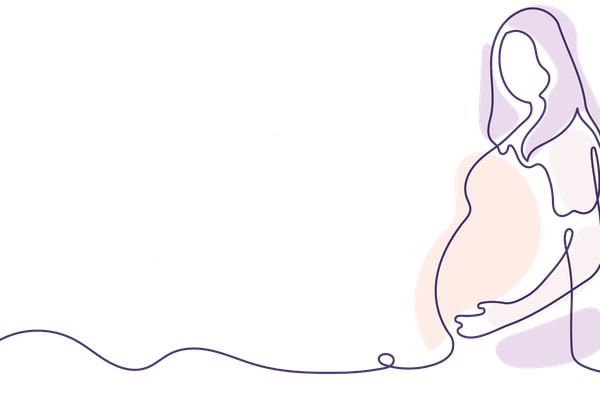From Women's Health Foundation
It's that little squirt of urine after you laugh or sneeze or that warm gush when you cough or exercise. Often called "laugh, cough, sneeze" incontinence, stress urinary incontinence (SUI) is just that—stressful.
If you have SUI, you're not alone. It's the most common form of incontinence in women, affecting an estimated 15 million women in the U.S.1
Contrary to popular belief, SUI is not a normal part of aging. It's a medical condition—and you shouldn't be embarrassed to tell your health care professional about it. If you have it, a combination of treatment approaches can help, from a simple exercise to lifestyles changes to surgery.
Influences/Causes
Stress urinary incontinence is often caused by damage to or weakening of the muscles of the pelvic floor that support the bladder and the urethra, the tube that brings urine from the bladder to outside the body. It can also be caused by weakness in the urethral sphincter, a ring of muscle around the urethra that keeps it closed until it's time to urinate.2 Vaginal childbirth is a common culprit in both scenarios.
Other contributing factors include menopause, obesity, diabetes (which can damage the nerves that control the bladder), hysterectomy, smoking, chronic coughing and constipation.
If you have SUI, anything that puts pressure on the bladder, including sneezing, coughing, laughing, lifting a baby, or going for a jog, can trigger a leak. So can having sex.
Treatments/Remedies
Exercise your pelvic floor muscles. This simple move, known as a Kegel exercise (it's named after the man who invented it), strengthens the muscles under your uterus and bladder to help prevent leaks. To do it, pretend you have to urinate, then pretend to "hold it" for a count of 10.3 Then relax for a count of 10. Do this 10 times, three to five times a day. (It's best to do this exercise when your bladder is empty.) If you're doing the exercise right, you should feel a slight upward pulling in your vagina and rectum.4 You should not contract your abdominal or gluteal (butt) muscles. In a month or two you should start to see your incontinence improve.5
Learn more about Exercises for Your Pelvic Floor Muscles.
Try biofeedback.This technique can help you learn to do Kegel exercises properly. Sensors are placed in or near your vagina and across your belly,6 and as you practice your Kegels, a computer monitor shows you which muscles you're working. If you're effectively tensing your pelvic floor muscles (and not your abdominal muscles), the computer feedback will tell you so. Eventually you'll be able to tense these muscles without the help of the feedback.
Read more on How to Lessen Urine Leakage.
Squeeze before you sneeze. Sneezing, coughing and even laughing can be an issue for people with stress incontinence. Try squeezing (a big pelvic floor muscle squeeze) before you sneeze or while you're coughing to help make it a drier experience.
Rock and roll. Use the "rock and roll" technique to get all the urine out when you visit the bathroom. Rock back and forth and side to side on the seat. Any urine that is caught in the bladder walls should roll right out.
Sit, don't squat. When you use a public restroom, do you hover over the toilet seat to avoid touching it? Instead, line the seat with a much toilet paper as necessary and sit. This allows you to "relax and release" so you empty your bladder more fully.
Train your bladder. Some people go every chance they get, even when they don't need to. They pee as a precaution, thinking, "You never know when you'll have another chance." What they're really doing is training their bladders to go often—and shrinking their bladder capacity over time. Most women under 65 can hold urine for at least three to four hours. If you think you have to urinate before your time is up, try this: Ignore the first signal to go. Wait 5 minutes. If the urge is gone, your bladder still has room to spare. Next time, wait 10 minutes, and so on. But don't take this advice too far; trying to be a camel and hold your urine for five hours or more can bring on a host of other problems. Bladder training also involves going to the bathroom at set times of the day—and moving those times further apart as your ability to "hold it" increases.
Distract yourself. Take deep breaths when you feel panicky about getting to the bathroom in time. Distract your mind by thinking hard about something else (taxes, the grocery list, the lyrics to your favorite song—whatever works).
Empty your bladder after intercourse. This helps to wash out any bacteria that may have been massaged into the urinary tract during sex, helping to prevent a urinary tract infection.
Drink the right amount of water. If you're a heavy drinker (of water, that is), your doctor might ask you to drink less. But don't allow yourself to become dehydrated. You should drink enough so that your urine is straw-colored. (Note that it will look different if you're taking certain supplements, especially B vitamins.) If your urine is dark or has a strong smell, you aren't drinking enough water and your urine is too concentrated, which can irritate the bladder.
Avoid foods and drinks that irritate the bladder. Potential irritants include:
- Tea and coffee. Caffeine is a strong diuretic. And coffee and tea—even decaf versions—are acidic. (Acids are bladder irritants.)
- Carbonated sodas. Most fizzy and cola-type drinks, including diet sodas, can irritate the bladder.
- Fruit and vegetable juice. Orange and tomato juice are acidic. Cranberry juice is also a major bladder irritant. It can help reduce the risk of bladder infections, but if you have incontinence, it's probably not worth it.
- Acidic or spicy foods. You may not have to give up all your favorites, but figure out which ones seem to make your incontinence worse and try to avoid those.
- Certain condiments. Culprits include ketchup, red pasta sauce, chilies, vinegar, mayonnaise, soy sauce and most salad dressings.
Embrace bladder-friendly foods. These includeolive oil and garlic. Bananas, cherries, grapefruit, and peaches are fine. Onions, bread, pasta, potatoes, beef, fish, rice, poultry, cauliflower and mushrooms also get the bladder's approval.
Surgical Treatment
When behavior changes don't provide enough relief, there are a number of surgical options, including:
- Sling surgery. Most surgeries for stress urinary incontinence are some form of sling procedure. In these procedures, the doctor makes an incision in the vagina and places a "sling," made from strips of your own body tissue or from a synthetic material, under the urethra and bladder neck to help keep them closed. The sling is attached to the abdominal wall. Two small incisions above the pelvic bone are usually required in addition to the vaginal incision.
- Urethral bulking. In this less invasive option, a urogynecologist injects collagen or another bulking material around the urethra to build up the section where it leaves the bladder.
Other Treatments
Pessary
A pessary is a device that you insert all the way into your vagina (until it touches the cervix) and wear all day to help prevent leaks. Pessaries come in different types and shapes; for stress urinary incontinence, the device could be a ring or a dish.7 The goal is to support and compress the urethra. Some women with stress incontinence may want to wear a pessary only during activities, such as exercise, that are likely to cause leaks.
Medications
If other approaches aren't successful, your health care professional may have you try medication. A handful of drugs have been shown to help reduce symptoms.
Acupuncture
Acupuncture is used increasingly by both urogynecologists and holistic healers to treat incontinence. One acupuncture study showed that incontinence disappeared in 18 percent of study participants, and incontinence symptoms decreased by 50 percent in nearly half of participants.
References:
1. Hampel C, Weinhold D, Benken N, Eggersmann C, Thuroff JW. Definition of overactive bladder and epidemiology of urinary incontinence. Urology. 1997;50 (suppl 6A):4-14.
2. Abrams P, Cardozo L, Fall M, et al. The standardisation of terminology of lower urinary tract function: Report from the Standardisation Sub-committee of the International Continence Society. Neurolgy Urodynamics. 2002;21(2)167-178.
3. Stress incontinence. MedlinePlus. https://www.nlm.nih.gov/medlineplus/ency/article/000891.htm
4. Pelvic floor muscle training exercises. MedlinePlus. https://www.nlm.nih.gov/medlineplus/ency/article/003975.htm
5. AUA Foundation. Stress Urinary Incontinence. UrologyHealth.org.
6. Biofeedback for Incontinence. UCSF Medical Center. https://www.ucsfhealth.org/education/biofeedback_for_incontinence/
7. Viera AJ, Larkins-Pettigrew M. Practical Use of the Pessary. Am Fam Physician. 2000;61(9):2719-2726. https://www.aafp.org/afp/2000/0501/p2719.html
- How to Know if You Have Urinary Incontinence - HealthyWomen ›
- What You Need to Know About Stress Urinary Incontinence - HealthyWomen ›
- Treating Stress Urinary Incontinence - HealthyWomen ›
- How to Not Let Light Bladder Leakage Hold You Back - HealthyWomen ›
- What You Need to Know About Urinary Incontinence - HealthyWomen ›
- Bladder Leakage During Sex - HealthyWomen ›






